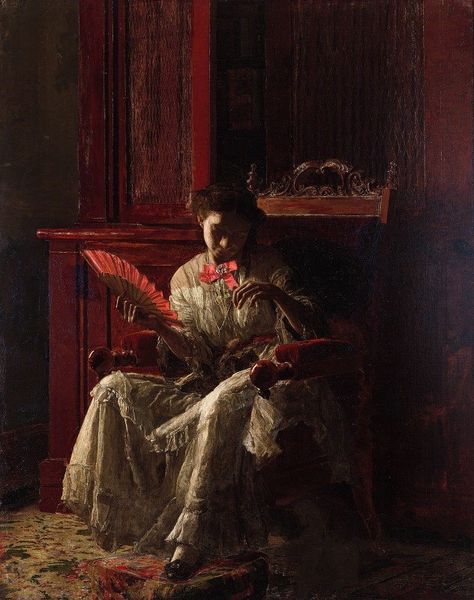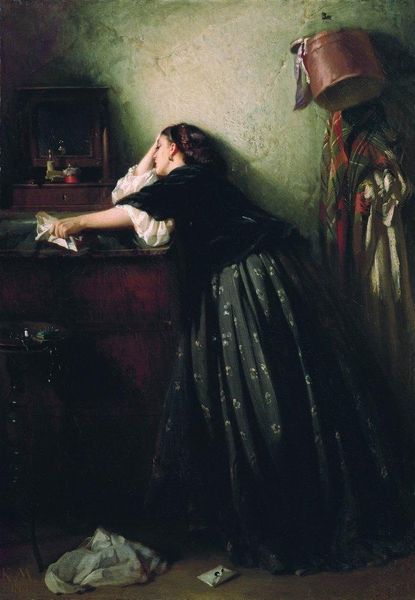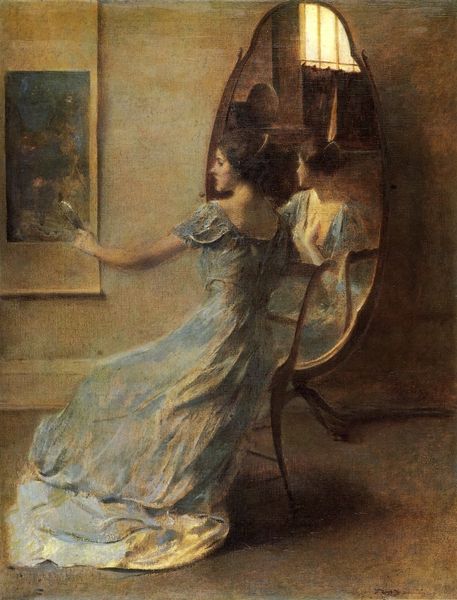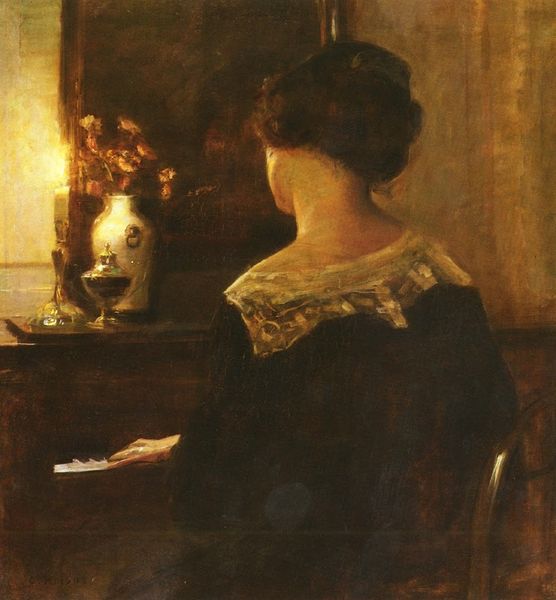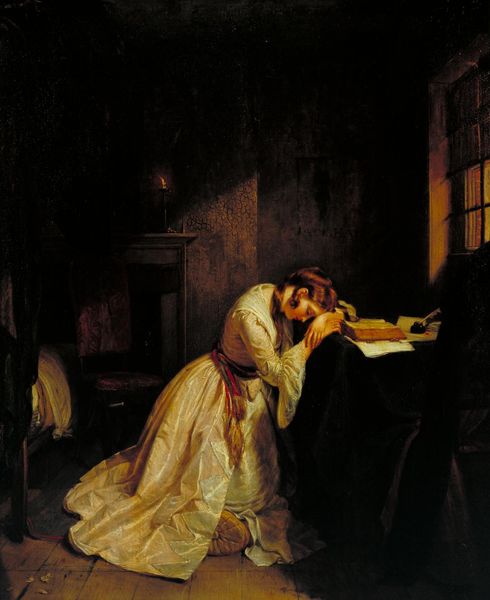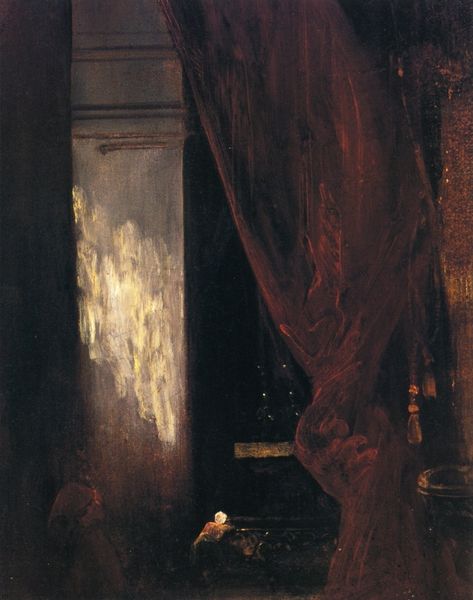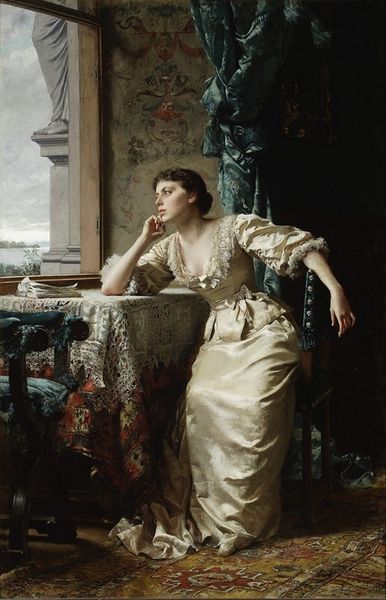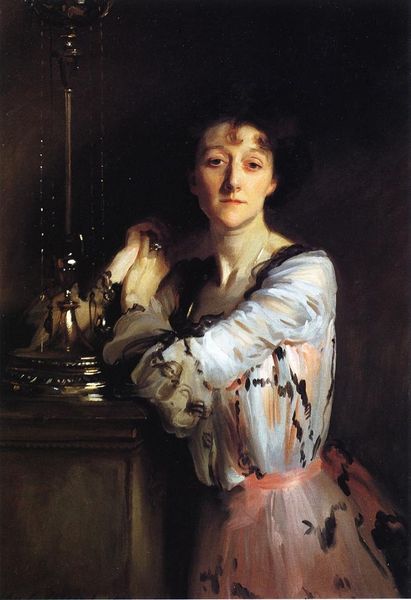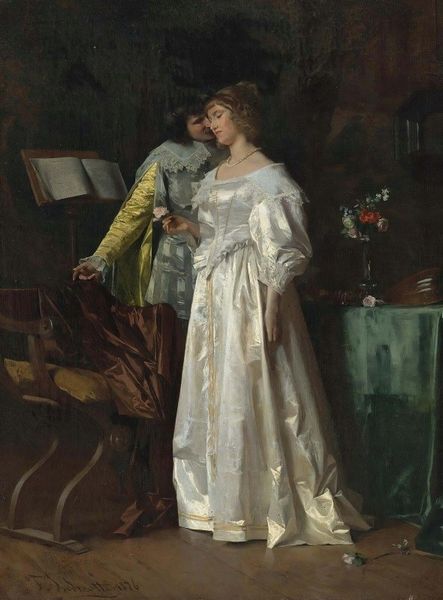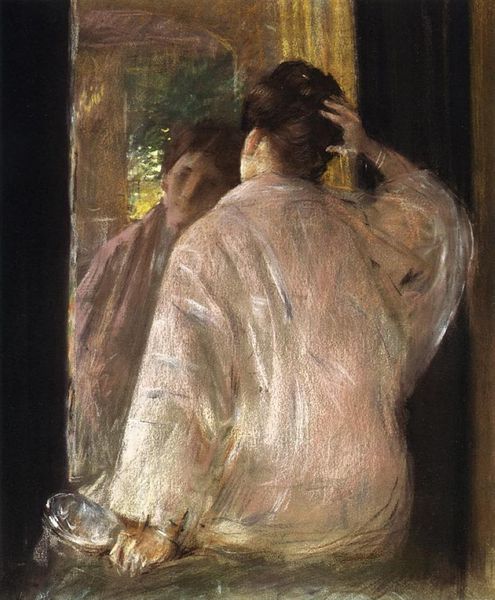
Copyright: Public domain
Curator: Here we have Eastman Johnson's "Girl at the Window" from 1879. It’s rendered in oil on canvas. Editor: The mood is strikingly somber, isn't it? A confined, almost claustrophobic interior. The color palette is limited to murky browns and grays with the girl dressed in what appears to be a simple white cotton gown, but its sheen suggests it is otherwise. There’s also the figure on the stairs in the background--a stark juxtaposition of lightness and darkness, indoor and outdoor, private versus public life. Curator: Notice how Johnson plays with diagonals. The angle of her body, the lines of the doorway and stairs—it creates a compelling tension, guiding the viewer's eye around the composition and out through the opening, emphasizing a vanishing point where her gaze meets with the faint apparition behind her and slightly to her left. Editor: Precisely. This interior domestic scene, presented during a moment of transition—an open door that beckons the girl forward to embrace womanhood while potentially fleeing the interiority that threatens to consume her. Her slightly blurred appearance contributes to the ambiguity surrounding the figures role within and outside her confined space. I think, more deeply, there’s a commentary on women’s restricted social roles and economic dependencies during that era. Did Eastman consciously portray women's struggle? Curator: We cannot say for sure. However, Johnson was a master of light, evident here. The subdued light from the doorway creates the shadow-laden composition. And it further defines the material qualities of the furniture in comparison to the figure standing just to the right. Note as well, the brushstrokes—visible and expressive—a characteristic trait of this period, as Academic Realism started inching its way out of the frame and paving the way toward what would become known as the Impressionist movement. Editor: I read the visible brushwork and the subject's ambiguous body position as symbolic markers in that greater cultural shift, nodding toward a desire for liberation. And as for her clothing, note that women's clothing, while ostensibly an exercise in sartorial expression, functioned instead as instruments to secure and bind feminine agency—both physical and economic. Curator: Indeed, these elements conspire to give the artwork a profound sense of unsettled quietude. Thank you for lending additional contexts for contemplating Eastman Johnson's thoughtful study of space and form! Editor: A real pleasure, especially in the context of how women express freedom.
Comments
No comments
Be the first to comment and join the conversation on the ultimate creative platform.
